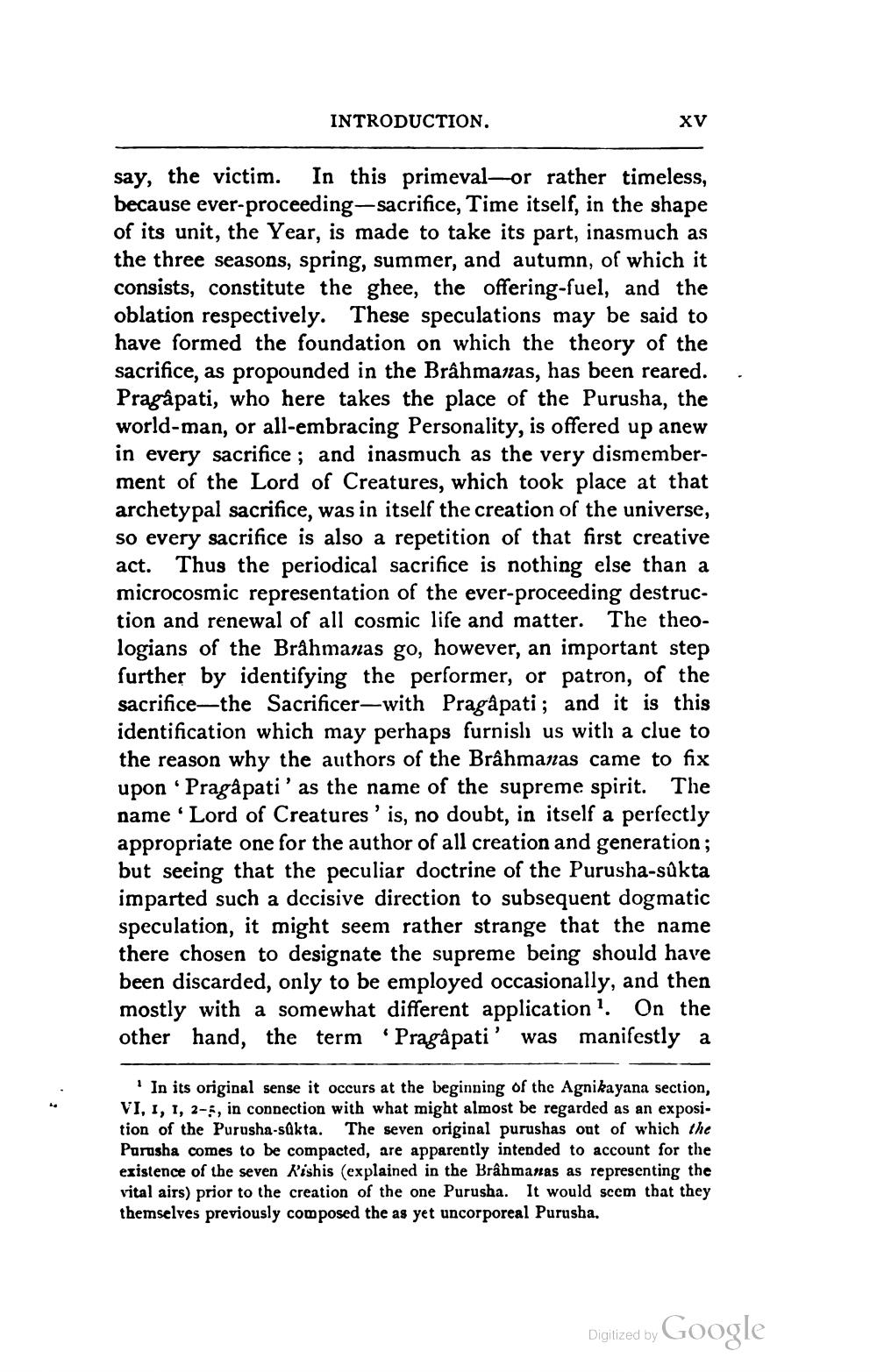________________
INTRODUCTION.
XV
say, the victim. In this primeval-or rather timeless, because ever-proceeding-sacrifice, Time itself, in the shape of its unit, the Year, is made to take its part, inasmuch as the three seasons, spring, summer, and autumn, of which it consists, constitute the ghee, the offering-fuel, and the oblation respectively. These speculations may be said to have formed the foundation on which the theory of the sacrifice, as propounded in the Brâhmanas, has been reared. Pragâpati, who here takes the place of the Purusha, the world-man, or all-embracing Personality, is offered up anew in every sacrifice; and inasmuch as the very dismemberment of the Lord of Creatures, which took place at that archetypal sacrifice, was in itself the creation of the universe, so every sacrifice is also a repetition of that first creative act. Thus the periodical sacrifice is nothing else than a microcosmic representation of the ever-proceeding destruction and renewal of all cosmic life and matter. The theologians of the Brahmanas go, however, an important step further by identifying the performer, or patron, of the sacrifice—the Sacrificer—with Pragâpati; and it is this identification which may perhaps furnish us with a clue to the reason why the authors of the Brâhmanas came to fix upon Pragâpati' as the name of the supreme spirit. The name 'Lord of Creatures' is, no doubt, in itself a perfectly appropriate one for the author of all creation and generation; but seeing that the peculiar doctrine of the Purusha-sukta imparted such a decisive direction to subsequent dogmatic speculation, it might seem rather strange that the name there chosen to designate the supreme being should have been discarded, only to be employed occasionally, and then mostly with a somewhat different application'. On the other hand, the term 'Pragâpati' was manifestly a
'In its original sense it occurs at the beginning of the Agnikayana section, VI, 1, 1, 2-6, in connection with what might almost be regarded as an exposition of the Purusha-säkta. The seven original purushas out of which the Purusha comes to be compacted, are apparently intended to account for the existence of the seven Rishis (explained in the Brahmanas as representing the vital airs) prior to the creation of the one Purusha. It would scem that they themselves previously composed the as yet uncorporeal Purusha.
Digitized by Google




